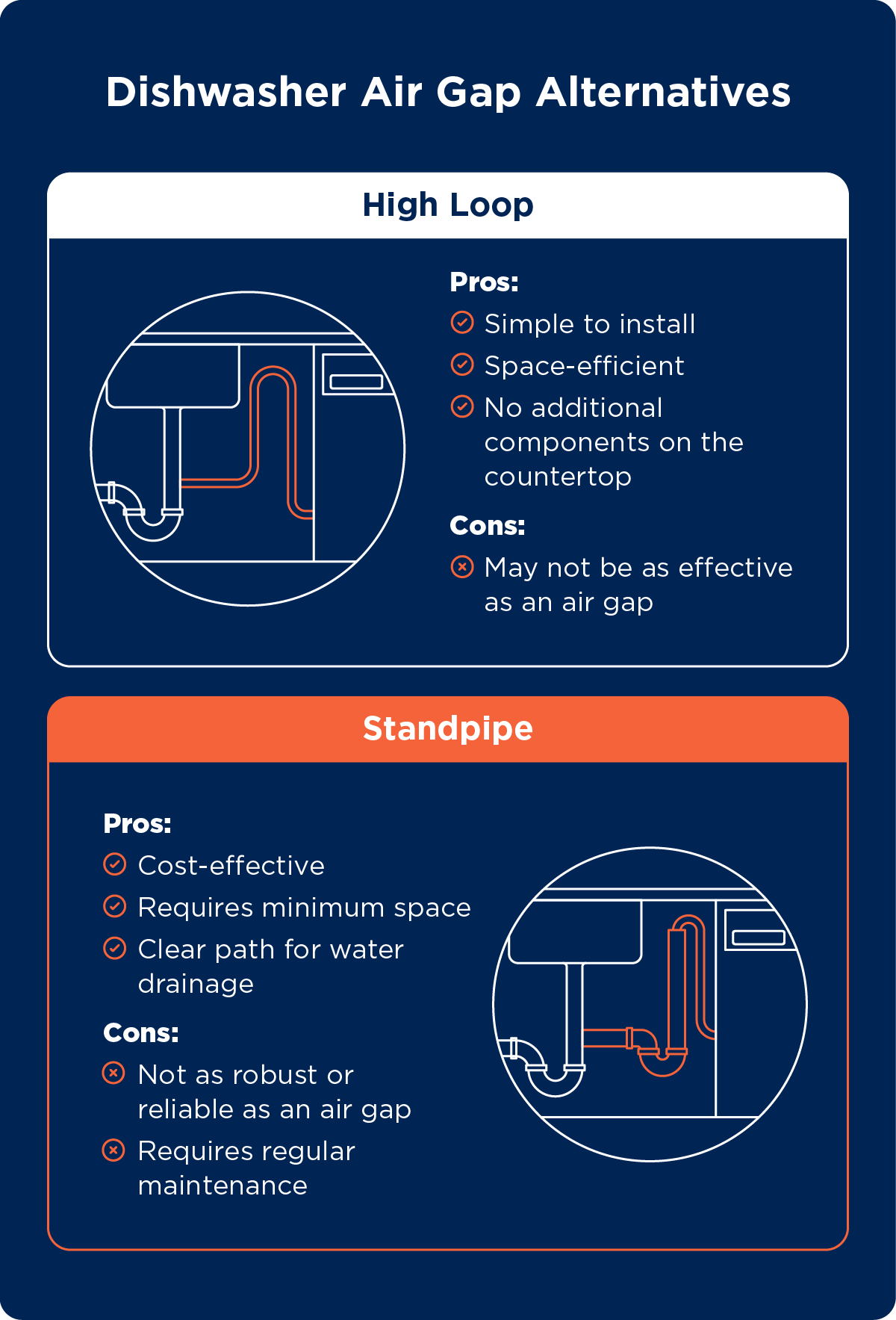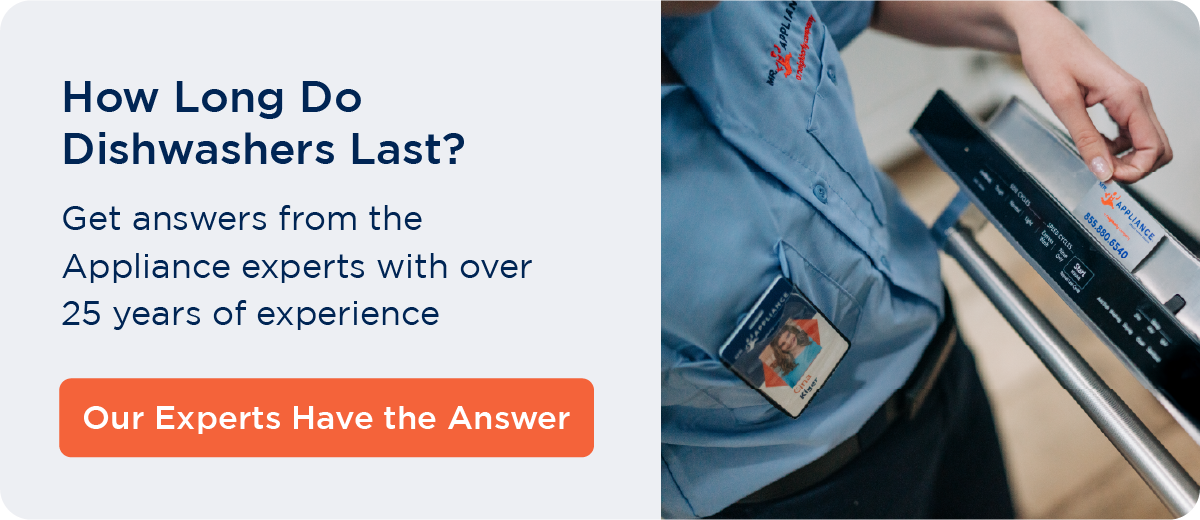Do You Need a Dishwasher Air Gap?

Your dishwasher is likely one of the most utilized appliances in your kitchen. But what if, one day, you notice an unexpected odor lingering on your freshly cleaned plates? The culprit might not be your dishwasher but rather a potential issue with water contamination.
That's where a dishwasher air gap comes in. This plumbing device plays a big role in keeping your kitchen clean and your dishes free from any unwanted odors and contamination.
What Is a Dishwasher Air Gap?
A dishwasher air gap is a plumbing device installed to prevent the backflow of dirty water from the sink into the dishwasher. When your dishwasher drains water, there's a chance that dirty water from the sink can flow back into it. An air gap for the dishwasher protects your dishwasher from potential wastewater overflow, ensuring the water flows out of the dishwasher into the garbage disposal.
How Does a Dishwasher Air Gap Work?
.webp)
A dishwasher air gap works by creating a physical gap of air to prevent water contamination. This device is located parallel to the kitchen sink and is usually covered by a short chrome or stainless steel fitting.
The air gap has two hoses. One hose lets the used water from the dishwasher out, and the other directs the used water to the garbage disposal. After a complete wash cycle, the water flows through the air gap and down the second hose, heading to the designated drain for proper disposal. This setup ensures water from the sink doesn't go back into the dishwasher, preventing contamination.
Do I Need an Air Gap for the Dishwasher?
If you reside in California, Washington, Minnesota, or Hawaii, installing a dishwasher air gap is mandatory per the plumbing code in these regions.
Even if your state doesn’t have a mandated law, installing a dishwasher air gap is a good idea to ensure proper hygiene. This extra layer of protection is especially valuable in preventing potential contamination and maintaining the safety of your kitchen environment.
Unlike older dishwasher models, some modern dishwashers come with built-in air gaps within the dishwasher unit. This built-in mechanism ensures that the water from the dishwasher can only flow in one direction during drainage.
The built-in mechanism typically involves using a check valve or a similar one-way flow prevention device. The check valve allows water to exit the dishwasher and flow into the sink's drain system, which also prevents backflow.
How To Install a Dishwasher Air Gap
Installing a dishwasher air gap is a relatively simple plumbing task, and you may be able to do it without professional assistance. Here are the installation steps to follow:
- Gather materials: You’ll need a dishwasher air gap fitting, a screwdriver, and hose clamps.
- Locate a pre-cut hole on the counter: Find a pre-cut hole in your sink or countertop where you’ll install the dishwasher air gap fitting. If you don’t see one, you’ll need to drill the hole yourself close to the rim of the sink.
Pro tip: Before you start drilling, put masking tape around the spot where you'll drill a hole. This should help protect your counter from any potential scratches during the drilling process. If your countertop is made of granite or marble, get a professional to do the job to avoid damage and expensive repairs.
-
Disconnect the dishwasher: Find the power switch for your dishwasher and turn it off. This ensures safety during installation.
-
Connect the air gap to the dishwasher drain hose: Locate the dishwasher's drain hose. It is a flexible tube typically found near the base or connected to the sink drain. Attach one end of the air gap to the dishwasher's drain hose, ensuring a tight, secure fit. This connection is essential for maintaining the proper direction of water flow during the dishwasher's operation.
If needed, use hose clamps to enhance the stability of the connection, providing an added layer of assurance against any potential leaks or disconnections.
-
Connect the air gap to the sink drain or garbage disposal: Connect the other end of the air gap to the sink drain or the garbage disposal (which is responsible for directing the water out of the dishwasher). Secure the tube tightly and use a hose clamp to prevent leakage.
-
Push the air gap through the hole in the counter: Take off the vanity cover from the top of the air gap and push it through the hole in the counter from underneath.
-
Secure the air gap: Twist the air gap along its threads. Once it is firmly attached to the counter, you can put the vanity cover back on the air gap.
-
Turn on the dishwasher for a test run: This wash cycle will help you check for any signs of leakage. Double-check to ensure there is no leakage spilling from the garbage disposal into your cabinet.
Can I Install a Dishwasher Air Gap Under the Sink?
Installing a dishwasher air gap under the sink is not recommended. It can lead to flooding if there's a blockage, and it's harder to notice and fix drainage issues.
- Flooding: Placing the air gap under the sink poses a risk of flooding if there's a blockage or clog in the drain hose. If water cannot flow freely through the air gap, it can lead to water damage under the sink or in the surrounding area.
- Draining hazards: If the dishwasher air gap is installed under the sink, it might be challenging to monitor and address any drainage issues promptly.
- Inefficient protection against backflow: Placing the air gap at a higher and more visible location, such as on the countertop, ensures a clear and unobstructed path for drainage, minimizing the risk of backflow.
How To Clean a Dishwasher Air Gap
If your air gap is blocked and needs to be cleaned, remove the top cap — clean the inside using a long-handled bottle brush to remove food particles that may be stuck in the tubing. This is also a good practice for regular maintenance to avoid potential issues.
Then inspect for any water leaks around the air gap during operation. These steps ensure a clean and efficient dishwasher air gap, preventing potential issues. Periodic maintenance and repair of related parts will help maximize your dishwasher’s lifespan.
Dishwasher Air Gap Alternatives
While air gaps are highly effective in preventing water backflow and contamination, some homeowners may opt for alternatives due to aesthetic preferences, space constraints, or specific plumbing configurations. Let’s learn about two of the most popular dishwasher air gap alternatives.

High Loop
A high loop is a configuration in which the dishwasher drain hose is looped high above the sink's drainage line, preventing backflow. The high loop serves as a natural barrier to water returning to the dishwasher.
Standpipe
A standpipe is a vertical pipe attached to the sink's drain line. The dishwasher drain hose is connected near the top of the standpipe, creating an elevated entry point.
Schedule Dishwasher Repair Today
Whether you choose a dishwasher air gap or explore alternative methods, proper installation, and periodic maintenance are key to preventing backflow and maintaining the efficiency of your dishwasher. Select the option that fits your preferences and plumbing setup to enjoy clean and hassle-free dishwashing.
Need a dishwasher air gap installed? Contact our team of local service professionals for expert installation and service.
Dishwasher Air Gap FAQ
Whether you're seeking clarification on air gap installation or troubleshooting potential issues, our team of experts has the answers.
Where Is the Air Gap on a Dishwasher?
A dishwasher air gap is a small plumbing unit that sits parallel to your kitchen sink near the faucet. This device connects your dishwasher to the kitchen sink drain.
How Do I Hide a Dishwasher Air Gap?
The easiest way to hide a dishwasher air gap is by installing an air gap cover. These covers are easy to install and visually appealing. Another option to conceal a dishwasher air gap is to install a countertop overlay.
Can I Connect the Dishwasher to the Garbage Disposal Without an Air Gap?
It is not advisable to connect the dishwasher to the garbage disposal without an air gap as it can lead to water contamination. If you want to prevent the backflow of contaminated water into your dishwasher, you’ll need to have an air gap installed.
Why Is the Water Coming Up the Air Gap in My Dishwasher?
One of the most common reasons for dishwasher air gap leaks is a blocked draining system. The drain hose could be blocked by accumulated food waste or debris build-up, causing the air gap leak. If the problem persists after unclogging and cleaning the drain hose, schedule dishwasher repair service.
What If My Dishwasher Has No Air Gap?
Without a dishwasher air gap, contaminated water can flow back into the dishwasher. A dishwasher air gap prevents this from happening by ensuring that the water flows in one direction: out of the dishwasher and into the garbage disposal. If you don’t have an air gap, have one installed for enhanced hygiene and plumbing safety.
This article is intended for general guidance only and may not be applicable to every situation. You are responsible for determining the proper course of action for your property and your situation. Mr. Appliance is not responsible for any damages that occur as a result of any advice or guidance derived from blog content. For the most accurate guidance, contact an independently owned and operated Mr. Appliance business for a professional custom and on-site assessment.
 Click to call
Click to call



